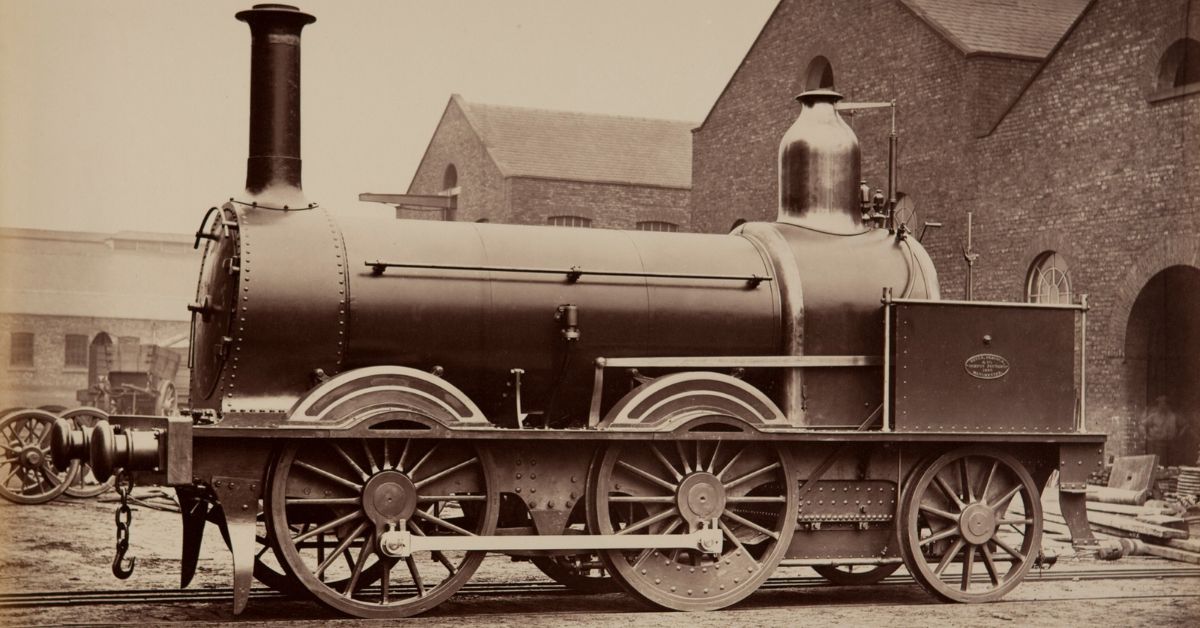How Indian Railways Helped Unify the Nation During the Freedom Struggle
(Representational image courtesy Google Arts and Culture)
When you think of India’s fight for independence, what comes to mind? Probably images of massive protests, fiery speeches, and fearless revolutionaries standing up to the British. But there was another most powerful tool that united India’s vast and diverse land. No, they weren’t weapons or words but steel tracks!
Yes, the Indian Railways, introduced by the British for their own gain, quietly played a pivotal role in connecting people, ideas, and movements across the subcontinent during the freedom struggle.
Tracks that connected more than just cities
When the first passenger train chugged along on 16 April 1853 between Bombay and Thane, little did anyone know that it would one day serve a purpose far beyond transporting goods and passengers. Over the decades, railways helped knit together a country that was as fragmented — culturally, geographically and politically.
 The introduction of railways helped people to understand the physical concept of India. Picture source: Wikipedia.
The introduction of railways helped people to understand the physical concept of India. Picture source: Wikipedia.
Suddenly, people from the North could travel to the South, the East could meet West, and a shared sense of identity started to grow. United India was no longer just an idea; it became a physical reality that people could experience.
“The railway system linked far-flung regions and brought the people of India into contact with one another on an unprecedented scale,” writes historian Ian J. Kerr in his book Engines of Change.
A highway for ideas and movements
With improved connectivity, ideas began to move as quickly as trains. Newspapers, pamphlets, and speeches advocating swaraj (self-rule) reached people even in the remote corners. Freedom fighters used trains to travel across the country, hold meetings, organise protests, and mobilise support.
Movements like the Non-Cooperation Movement (1920), Salt March (1930), and Quit India Movement (1942) saw unprecedented nationwide participation, thanks, in part, to the reach of our railways.
Mahatma Gandhi used railway’s third-class to not just travel, but to connect with the common people and villagers by gaining first-hand experience of the ordinary lives of fellow Indians. These journeys were instrumental in shaping his inclusive vision for an independent India.
Rebels on the rails
Railways weren’t just carriers of people and ideas, they also mobilised resistance. Revolutionary leaders like Bhagat Singh and Chandrashekhar Azad used the railways to move covertly between cities, often keeping up with the nation’s independence struggles.
Sabotaging rail tracks became a strategy for some revolutionaries to disrupt British communication and supply chains. At the same time, railway stations turned into battlegrounds, venues for protests, gatherings, and violent crackdowns.
Major stations like Howrah, Mumbai VT, and Lahore witnessed landmark events like the Civil Disobedience Movement, Lahore Resolution, etc in the independence movement. These weren’t just transit points — they were symbols of the colonial machinery that Indians were fighting to dismantle.
Strikes on the steel tracks
Back in colonial India, the Railways were one of the biggest employers around — and with such a huge workforce, it’s no surprise that many railway workers became part of the freedom movement. Railway workers were among the first to unionise, and their strikes often took on a political colour.
The All India Railwaymen’s Federation, established on 16 February 1925, didn’t just fight for better wages but also supported the call for freedom. It was affiliated with the socialist trade union centre Hind Mazdoor Sabha.
From exploitation to empowerment
The irony is hard to miss. A system built by the British to exploit India’s resources ended up helping Indians rise against them. While the British saw the railways as a way to tighten their grip, the freedom fighters turned them into a tool for empowerment and unity.
Christian Wolmar, in Railways and the Raj, sums it up well: “The railways, intended to strengthen British control, instead ended up encouraging nationalism and undermining colonial rule.”
Today, when you watch a train wind its way across rice paddies, deserts, or mountains, remember — it’s more than just a journey. It is a reminder of how the railways once helped ordinary Indians dream of something extraordinary: freedom.
Edited by Saumya Singh
News